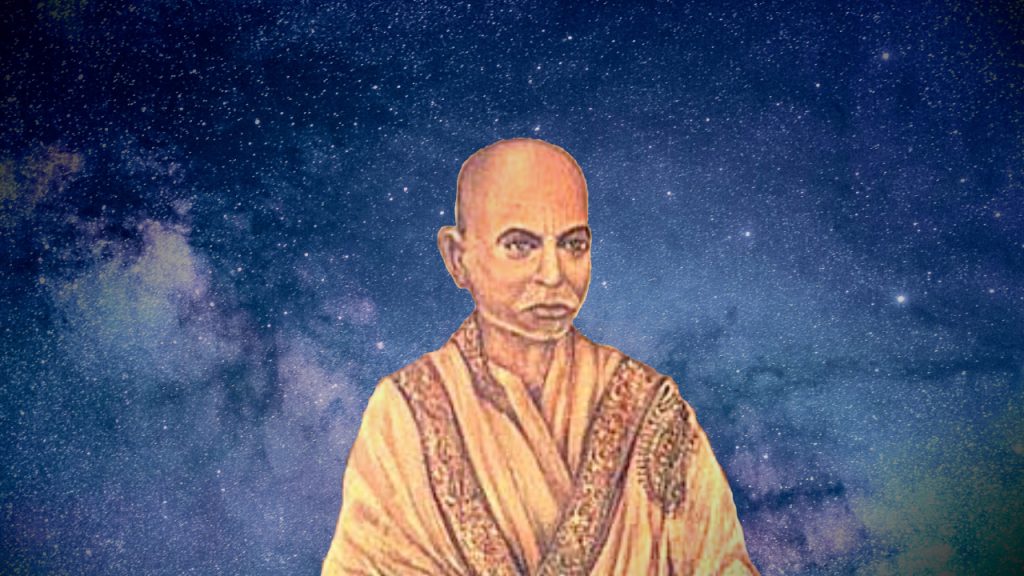After all the cacophony of the day, the night brings us calmness with its peaceful silence and a picture of meditating sky where stars from distant galaxies twinkle light years away. On these tranquil nights, one of the greatest astronomers was observing the distant stars and planets with his creative yet genius astronomical instrument known as ‘Mana Yantra’ made using pieces of bamboo and wood. He was Pathani Samanta – an astronomer, whose fascination with the infinite expanse of the cosmos earned him reverence in Odisha as well as throughout the world.
It was 13 December 1835, and in the picturesque village of Khandapada a child was born to Bishnumali Devi and Samanta Syamabandhu Singha. Little did the royal couple know that this child was destined for greatness. However, Pathani Samanta, as we know him now, was not his actual name. Rather, it was a moniker that he acquired as a result of a series of events that shaped his early life. His full name with honourifics is: Mahamahopadhyaya Chandrasekhar Singha Harichandan Mohapatra Samanta.
As the wall murals of the Pathani Samanta Planetarium in Bhubaneswar reveal, Pathani Samanta’s parents had suffered the loss of two daughters and one son in infancy. To protect their newborn son from what they perceived as the evil eye seeming to follow them, the couple sought the help of a Muslim fakir. The fakir adopted the child. To ward off any remaining traces of the evil eye, and in memory of the fakir who had saved their son’s life, the couple nicknamed him ‘Pathani’.
Deputy Director of Pathani Samanta Planetarium, Subhendu Pattnaik shared some intriguing insights about the life of Pathani, an underrated genius whose remarkable story deserves wider recognition.
From a very young age, Pathani developed a love for stargazing, which was his first love. Ample reading was the second. From 11 years of age, he used to study lots of ‘granthas’ (treatise) written in Sanskrit – which described how one can predict the position and movement of stars.
“Pathani was home-schooled by his father and his ‘guru’, who helped him learn Sanskrit and Mathematics. He was a heedful observer, who from the age of 11 to 23 – without using any western or modern instruments – used to measure the position and speed of the celestial objects with his naked eye and using a self-made instrument called ‘Mana Yantra’,” said Pattnaik.
Afterward, he realised that the position of the star he observed did not match the prediction recorded in the ‘granthas’. As a result, he meticulously reviewed his own observations and calculations, uncovering a discrepancy that piqued his curiosity and prompted him to delve deeper.
“Over the course of approximately eight years, he spent his nights observing the stars and planets, diligently recording their positions. Eventually, he devised his own method, building upon older methods, that enabled him to determine the precise locations of celestial bodies,” Pattnaik said.
Despite his uncle being a king at the time, Pathani Samanta’s family frequently faced financial difficulties as they were living separately. While conducting his night-time observations for years, he also experienced some health problems. Nevertheless, he persisted with his observations and meticulously documented his discoveries. When he was 34, he completed the compilation of his observations, calculations, and findings, which later got published in a book called ‘Siddhanta Darpana’.
Siddhanta Darpana is a unique Sanskrit text that each and every Odia should be proud of. The book got mentioned in the prestigious British journal ‘Nature’ and the American journal ‘Knowledge’, Pattnaik said.
Samanta was one of the greatest Odias to have ever lived on the land of the Lord Jagannath. Though best known for his contributions to astronomy, his impact on the people of Odisha is immeasurable, as he inspired Odias to look up and contemplate the vast and beautiful universe.
In his memory, a number of initiatives have been launched, from the Pathani Samanta Scholarship for students excelling in Mathematics to the Pathani Samanta Planetarium, which showcases both the wonders of astronomy and the inspiring story of Pathani’s life. Through these efforts, his message and his inspiration continue to reach new heights, encouraging all to look towards the stars and find their own path toward greatness.
by Harihara Kar, OP
